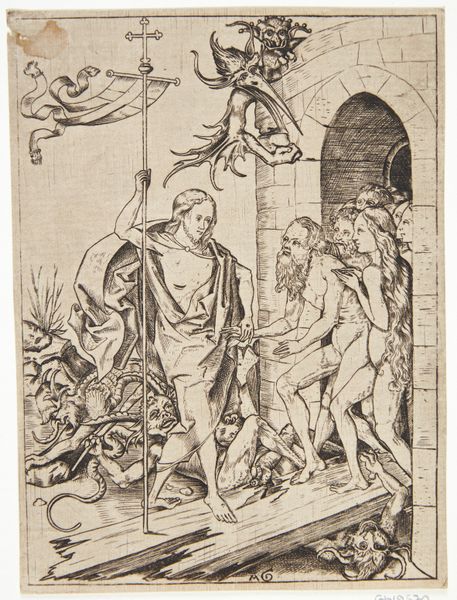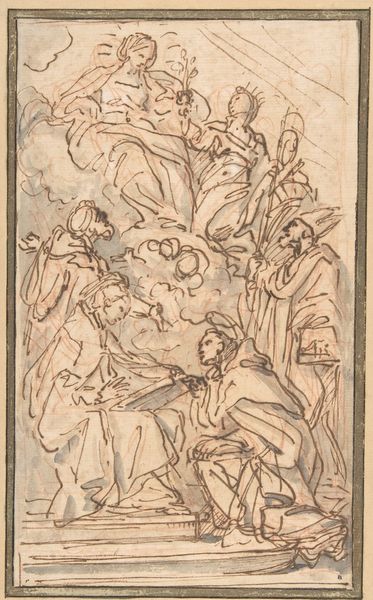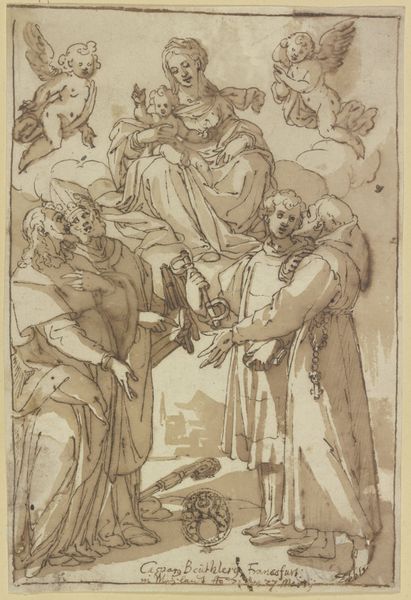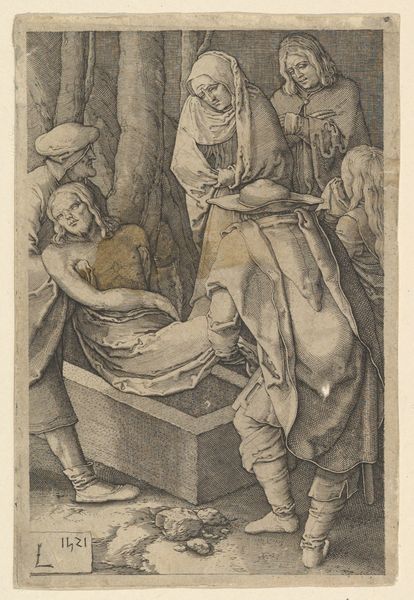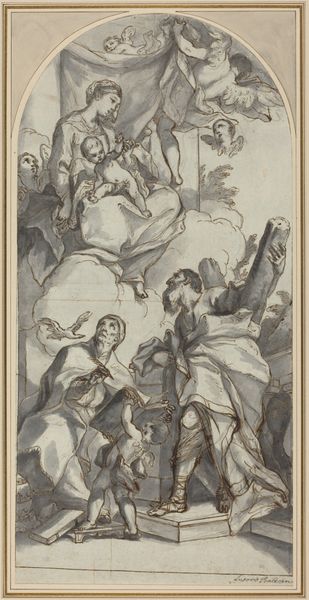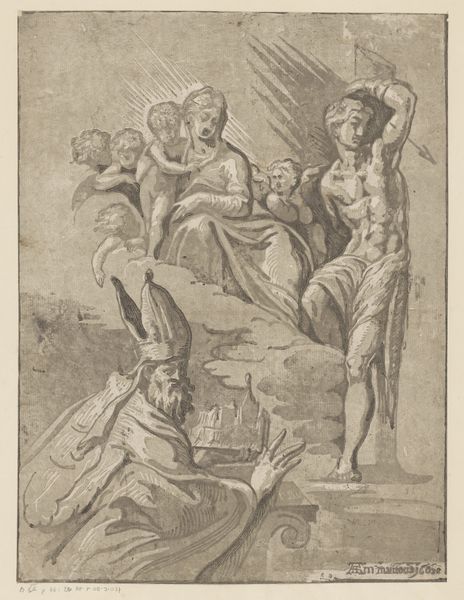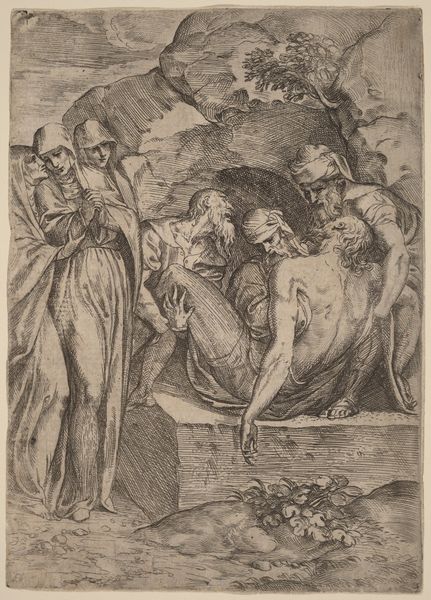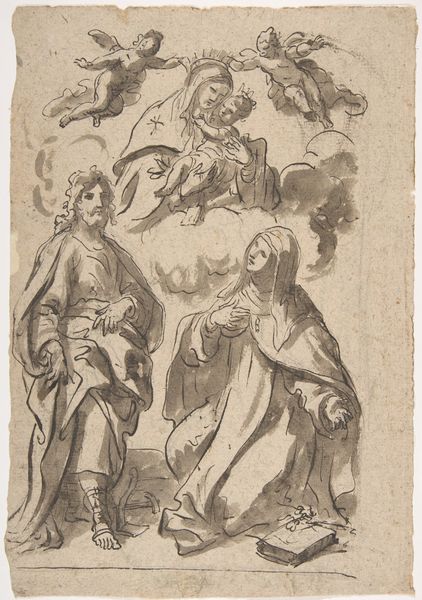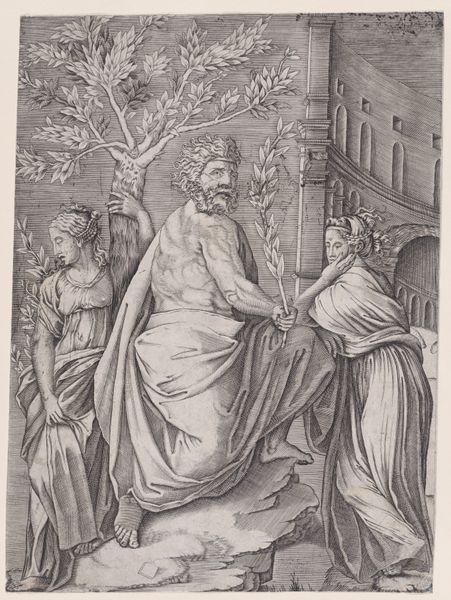
drawing, print, paper, engraving
#
drawing
#
medieval
#
narrative-art
# print
#
figuration
#
paper
#
engraving
Dimensions: 136 × 102 mm (image/sheet)
Copyright: Public Domain
Editor: Here we have Israhel van Meckenem’s "Saint Christopher," a print on paper from the medieval period. I am immediately struck by the textures created by the engraving technique; it's all lines and the wave pattern is pretty unusual. How might we interpret the work from a materialist perspective? Curator: It’s precisely that labor-intensive engraving process, and its wider context, that’s key here. Prints like these democratized imagery. Think about the labor involved: the careful carving into the metal plate, the paper-making itself. This wasn't about unique artistry like painting, but replication. What implications does that have, do you think, for the artwork’s reception? Editor: So, rather than seeing it as a unique object of devotion, it's part of a larger system of production, making religious imagery more accessible? A kind of early mass production? Curator: Exactly. The lines, the medium…these are all evidence of production. Saint Christopher was the patron saint of travelers, right? Prints like these would be small, portable, readily available – imagine pilgrims buying them as talismans. The material process mirrors and reinforces the artwork’s intended function and audience. Is there anything else about the social or cultural context? Editor: Thinking about the time, wouldn't something like that disrupt or democratize traditional authority? The image isn't owned or curated by a single source... Curator: Precisely! It bypasses the church’s monopoly on religious imagery to an extent. Editor: I had not thought of it that way before. Understanding how it was made really helps me grasp the intentions and potential impact of the artwork. Curator: It's amazing how much looking at the means of production opens up the work itself, isn't it?
Comments
No comments
Be the first to comment and join the conversation on the ultimate creative platform.
